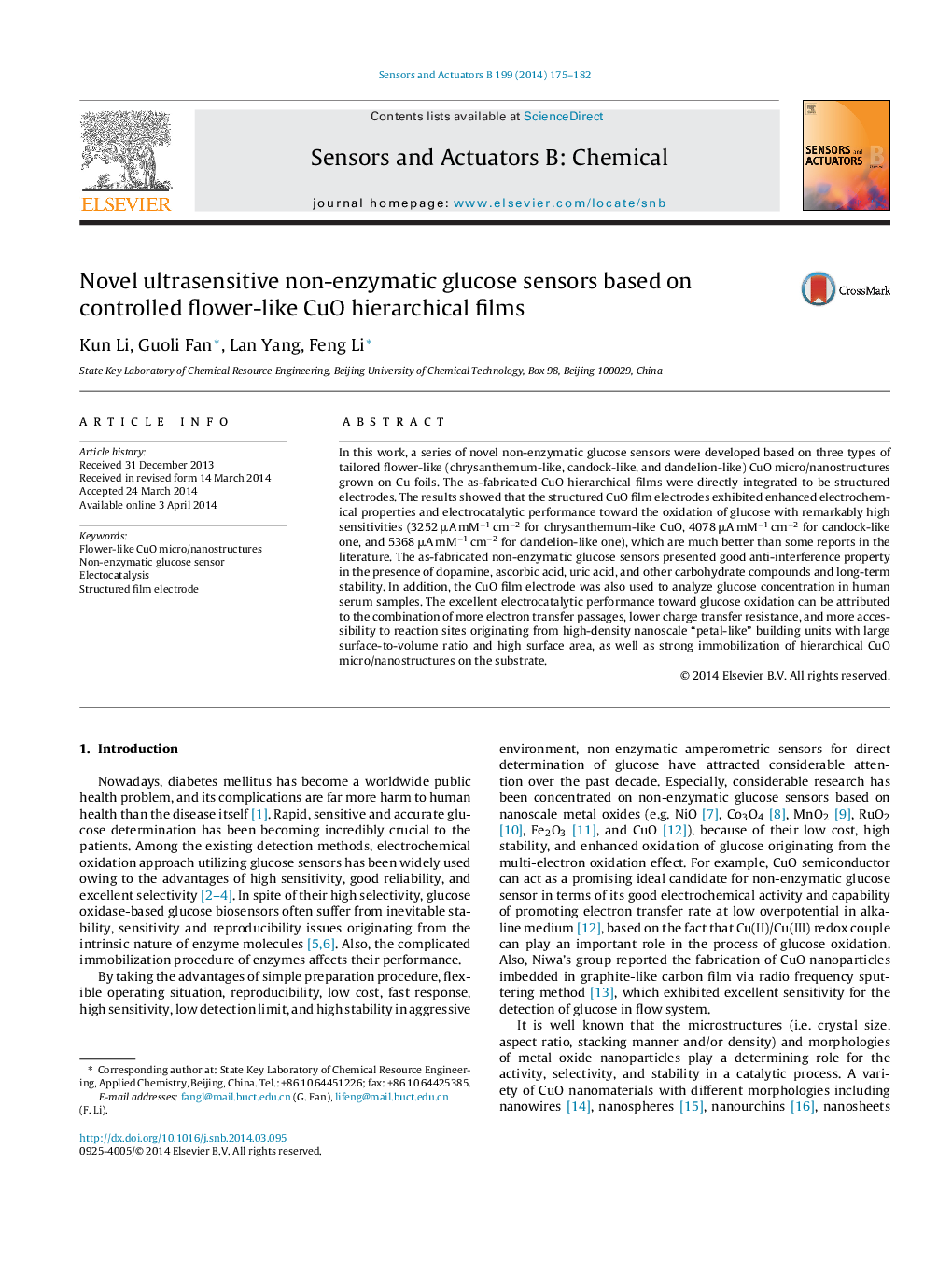| Article ID | Journal | Published Year | Pages | File Type |
|---|---|---|---|---|
| 7147024 | Sensors and Actuators B: Chemical | 2014 | 8 Pages |
Abstract
In this work, a series of novel non-enzymatic glucose sensors were developed based on three types of tailored flower-like (chrysanthemum-like, candock-like, and dandelion-like) CuO micro/nanostructures grown on Cu foils. The as-fabricated CuO hierarchical films were directly integrated to be structured electrodes. The results showed that the structured CuO film electrodes exhibited enhanced electrochemical properties and electrocatalytic performance toward the oxidation of glucose with remarkably high sensitivities (3252 μA mMâ1 cmâ2 for chrysanthemum-like CuO, 4078 μA mMâ1 cmâ2 for candock-like one, and 5368 μA mMâ1 cmâ2 for dandelion-like one), which are much better than some reports in the literature. The as-fabricated non-enzymatic glucose sensors presented good anti-interference property in the presence of dopamine, ascorbic acid, uric acid, and other carbohydrate compounds and long-term stability. In addition, the CuO film electrode was also used to analyze glucose concentration in human serum samples. The excellent electrocatalytic performance toward glucose oxidation can be attributed to the combination of more electron transfer passages, lower charge transfer resistance, and more accessibility to reaction sites originating from high-density nanoscale “petal-like” building units with large surface-to-volume ratio and high surface area, as well as strong immobilization of hierarchical CuO micro/nanostructures on the substrate.
Related Topics
Physical Sciences and Engineering
Chemistry
Analytical Chemistry
Authors
Kun Li, Guoli Fan, Lan Yang, Feng Li,
